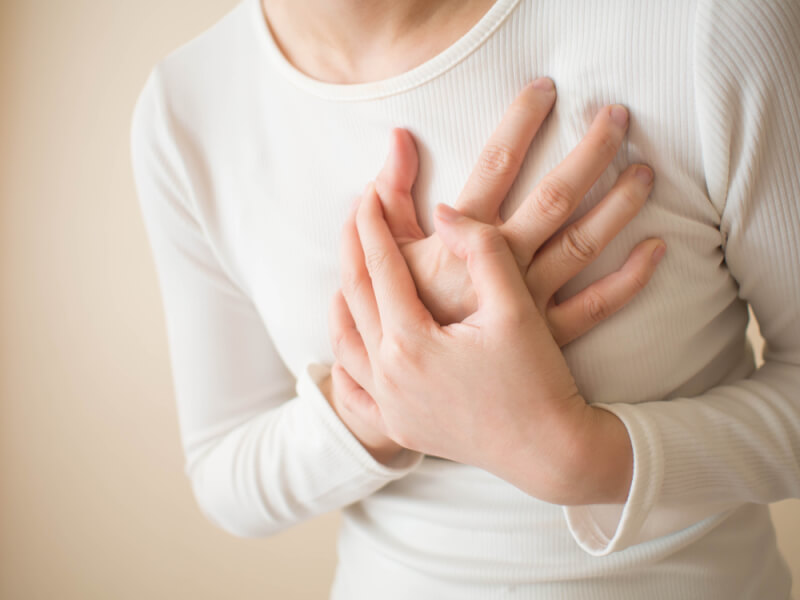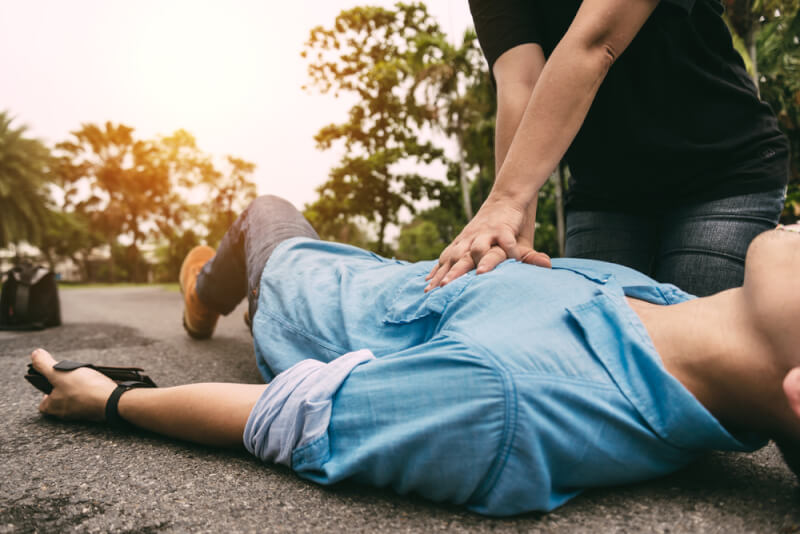
Let's learn more about AED units and cardiac arrest

What is cardiac arrest (SCA)?
Cardiac arrest is a medical emergency that occurs when the heart suddenly stops beating effectively, which prevents blood from circulating to the brain and other vital organs. This can result in a loss of consciousness, cessation of breathing, and potentially irreversible brain damage if not treated promptly. Causes of cardiac arrest can include heart disease, electrocution, drug overdose, and trauma, among others. Immediate treatment with cardiopulmonary resuscitation (CPR) and defibrillation can help restore normal heart function and increase the chances of survival.

Why do we need an AED for cardiac arrest?
An automated external defibrillator (AED) is a medical device that delivers an electric shock to the heart in cases of sudden cardiac arrest. It is needed because cardiac arrest can cause the heart to enter into a chaotic rhythm called ventricular fibrillation, in which the heart quivers instead of beating normally. AEDs are used to deliver a shock to the heart to reset its rhythm, allowing it to resume normal function. The sooner an AED is used after a cardiac arrest, the higher the chance of restoring the patient's heart function and increasing their chances of survival.

Does CPR alone start a heart in cardiac arrest?
CPR (cardiopulmonary resuscitation) is a technique used to manually pump blood through the body when the heart has stopped. While CPR can help maintain blood flow and oxygen to vital organs, it cannot start a heart that has stopped due to a heart attack or other causes of cardiac arrest. The purpose of CPR is to keep the person alive until an AED (automated external defibrillator) can be used to shock the heart back into a normal rhythm, or until advanced medical care arrives to treat the underlying cause of the cardiac arrest. Without the use of an AED or other medical intervention, the chances of restoring normal heart function and saving the person's life are significantly lower.
What are the common myths about AED use?
1️⃣ AEDs can harm people by delivering unnecessary shocks:
AEDs are designed to analyze a person's heart rhythm and only deliver a shock if the heart is in a rhythm that can be treated with defibrillation. AEDs will not deliver a shock unless it is necessary, so they cannot harm people by delivering unnecessary shocks.
2️⃣ AEDs can restart a stopped heart:
AEDs are designed to restore a heart that is in a chaotic rhythm such as ventricular fibrillation, but they cannot start a heart that has completely stopped beating.
AEDs are designed to restore a heart that is in a chaotic rhythm such as ventricular fibrillation, but they cannot start a heart that has completely stopped beating.
3️⃣ AEDs are difficult to use:
AEDs are designed to be user-friendly and are equipped with voice prompts and visual instructions to guide users through the process. Anyone can use an AED with little to no training.
AEDs are designed to be user-friendly and are equipped with voice prompts and visual instructions to guide users through the process. Anyone can use an AED with little to no training.
4️⃣ Only medical professionals can use AEDs:
While AEDs are commonly found in medical settings, they can be used by anyone, including laypersons who have received basic CPR training.
While AEDs are commonly found in medical settings, they can be used by anyone, including laypersons who have received basic CPR training.
5️⃣ AEDs are expensive:
While AEDs can be expensive, the cost of an AED is often less than the cost of other medical equipment. Moreover, the cost of an AED is a small price to pay for the potential to save a life.
While AEDs can be expensive, the cost of an AED is often less than the cost of other medical equipment. Moreover, the cost of an AED is a small price to pay for the potential to save a life.
6️⃣ AEDs can only be used on adults:
AEDs can be used on both adults and children, and some AEDs are equipped with pediatric pads specifically designed for use on children.
AEDs can be used on both adults and children, and some AEDs are equipped with pediatric pads specifically designed for use on children.
It's important to separate fact from fiction when it comes to AED use, as knowing the truth about AEDs can help increase the chances of saving a life in an emergency.
What are the common myths about delivering CPR?
1️⃣ Bystander CPR can cause harm:
Bystander CPR involves chest compressions and rescue breathing, and is designed to keep oxygen flowing to vital organs until medical professionals arrive. Bystander CPR has been shown to be safe and effective, and is unlikely to cause harm if performed correctly.
2️⃣ Only medical professionals can perform CPR:
Bystander CPR can be performed by anyone who has been trained in basic CPR techniques, including chest compressions and rescue breathing. CPR training is widely available and can be completed in just a few hours.
Bystander CPR can be performed by anyone who has been trained in basic CPR techniques, including chest compressions and rescue breathing. CPR training is widely available and can be completed in just a few hours.
3️⃣ CPR always results in a successful outcome:
While bystander CPR can be a life-saving intervention, it is not always successful. CPR is most effective when it is performed immediately after cardiac arrest occurs and when an AED is available for use.
While bystander CPR can be a life-saving intervention, it is not always successful. CPR is most effective when it is performed immediately after cardiac arrest occurs and when an AED is available for use.
4️⃣ CPR can restart a stopped heart:
CPR is designed to maintain blood flow and oxygen to vital organs until an AED can be used to shock the heart back into a normal rhythm. CPR alone cannot restart a stopped heart.
CPR is designed to maintain blood flow and oxygen to vital organs until an AED can be used to shock the heart back into a normal rhythm. CPR alone cannot restart a stopped heart.
5️⃣ People will be sued for performing CPR:
Good Samaritan laws protect bystanders who perform CPR in good faith from legal liability. These laws are in place to encourage people to perform CPR in emergency situations without fear of being sued.
Good Samaritan laws protect bystanders who perform CPR in good faith from legal liability. These laws are in place to encourage people to perform CPR in emergency situations without fear of being sued.
6️⃣ CPR is too complicated for the average person to perform:
CPR training is designed to be easy to understand and can be completed in just a few hours. Anyone can learn how to perform CPR with a little bit of training.
CPR training is designed to be easy to understand and can be completed in just a few hours. Anyone can learn how to perform CPR with a little bit of training.
It's important to separate fact from fiction when it comes to bystander CPR, as knowing the truth about CPR can help increase the chances of saving a life in an emergency.
Dr Steven Brooks discusses CellAED®
CellAED®, Snap Peel Stick™, CellAED for Life™ and Time is Everything™ are trademarks of Rapid Response Revival and used with permission.